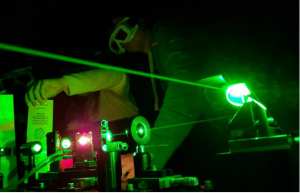
Image: Maxim Pchenitchnikov, University of Groningen
An international research group claims to have developed a new bulk perovskite semiconductor material that can capture the excess energy of hot electrons. The material is said to rapidly absorb as heat energy which would otherwise be wasted. With the harvesting of hot electrons, the maximum theoretical efficiency for hybrid-perovskite solar cells could increase from 33% to 66%.
Hot electrons – also known as hot carriers – have high kinetic energy which, in a semiconductor, can have the undesired effect of remaining trapped in areas of the device where they shouldn’t be. That can result in the formation of a space charge which degrades the device or renders it unstable.
The harvesting of such hot carriers could see higher cell voltage and, therefore, device efficiency. However, hot electrons are produced by photons with energy higher than the ‘band gap’ of the semiconductor and go to waste as heat very rapidly.
Researchers from the Netherlands’?University of Groningen?and?Nanyang Technological University, in Singapore, have discovered a material they say could harvest the excess power produced by hot electrons so they can contribute to semiconductor device voltage.
The result was achieved using a perovskite with an acceptor material for hot electrons, the scientists said. They combined an?organic-inorganic hybrid perovskite?semiconductor with the organic compound bathophenanthroline (bphen). The latter is a material with a sufficiently large bandgap to harvest the energy of hot electrons. “This means that the hot electrons should be transported to this material before losing their energy,” the researchers wrote.
Better option
The scientists said hot electrons were created in the perovskites with energy levels just above the bandgap of bphen without exciting electrons in the organic compound. Unlike commonly used?nanoparticles, which can harvest hot electrons by slowing down the loss of energy, the bulk perovskite material used did not need to slow the electrons.
The experiments showed, according to the researchers, hot electrons from the perovskite semiconductor were readily absorbed by the bphen. “Without any tricks the hot electrons were harvested,” stated the group. The scientists observed the behavior of the electrons after exciting them using a laser.
The next step in the research is the construction of a semiconductor using the materials studied. The researchers added, extra energy will be needed to overcome a barrier at the interface between the two materials.
Research conducted at the University of Groningen last year indicated theoretical calculations had shown the maximum efficiency for hybrid-perovskite solar cells could be raised from?33% to 66%?if hot electrons could be harvested.






